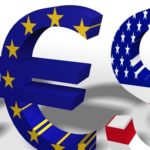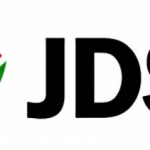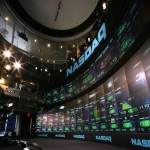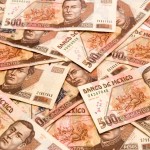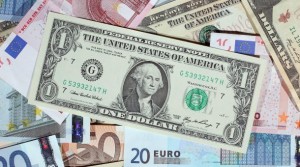 The euro snapped three days of losses against the US dollar, after data showed investors confidence in the euro area rose this month to the highest in three years. However, gains were limited as last week European Central Bank President Mario Draghi suggested readiness to use Quantitative easing (QE) to boost inflation in the currency bloc.
The euro snapped three days of losses against the US dollar, after data showed investors confidence in the euro area rose this month to the highest in three years. However, gains were limited as last week European Central Bank President Mario Draghi suggested readiness to use Quantitative easing (QE) to boost inflation in the currency bloc.
EUR/USD hit a session high at 1.3738 at 11:25 GMT, after which consolidation followed at 1.3724, adding 0.15% for the day. Support was likely to be found at April 4th low, 1.3673, also the pairs weakest since February 27, while resistance was to be met at April 3rd high, 1.3804.
Euros demand was heightened after a gauge measuring sentiment in the euro area rose to the highest since April 2011, suggesting investors in the 18-nation common currency area are regaining confidence in the economy.
The Sentix index rose to 14.1 this month, up from 13.9 in March, but slightly below analysts projections for an increase to 14.2, data by the Sentix research institute showed today.
However, gains were capped as the President of the ECB Mario Draghi commented last week that officials “do not exclude further monetary policy easing.” Draghi said that the Governing Council of the central bank had discussed possible measures to fight against deflation and all the members were “unanimous” that the central bank should explore new policy avenues.
Draghi gave his strongest signal so far that the ECB is ready and may use a policy that is mainly associated with large-scale government bond purchases, known as Quantitative easing. However, the central bank may have to design its own approach to QE, different from the one implemented by the US Federal Reserve, because of the specificity of the euro area’s economy.
The ECB President is struggling to convince investors that the central bank is ready to do whatever it takes to prevent a Japan-style deflationary spiral. At the same time, there are a number of political and economic obstacles to a wide wave of sovereign-asset purchases, which probably makes a program aimed at increasing bank lending more appropriate. Boosting bank lending is a way to improve credit conditions for small-and-medium sized entities, which are the backbone of the euro region economy.
Meanwhile, greenbacks demand continued to be pressured after payrolls data on Friday came below market expectations.
Employers in all sectors of the US economy, excluding the farming industry, added 192 000 new jobs in March, after a revised 197 000 gain in the precious month that was higher than previously reported. The median experts’ forecast called for 200 000 new payrolls to be added last month. Jobs creation is considered of utmost importance for consumer spending, which accounts for almost 70% of the US economy.
In 2013, the US added 194 000 payrolls each month on average, while in 2012 the jobs created were 186 000.
During the week ahead investors’ attention will be focused on the minutes from the March 18-19 Fed policy meeting, due to be released on April 9. The Federal Open Market Committee, which cut monthly asset purchases by $10 billion at each of its past three meetings, is set to reconvene at the end of the month.
Elsewhere, USD/NOK hit a session low at 5.9895 at 08:00 GMT, after which consolidation followed at 6.0015, adding 0.02% for the day. Support was likely to be received at April 4th low, 5.9749, while resistance was to be met at April 4th high, 6.0172.
